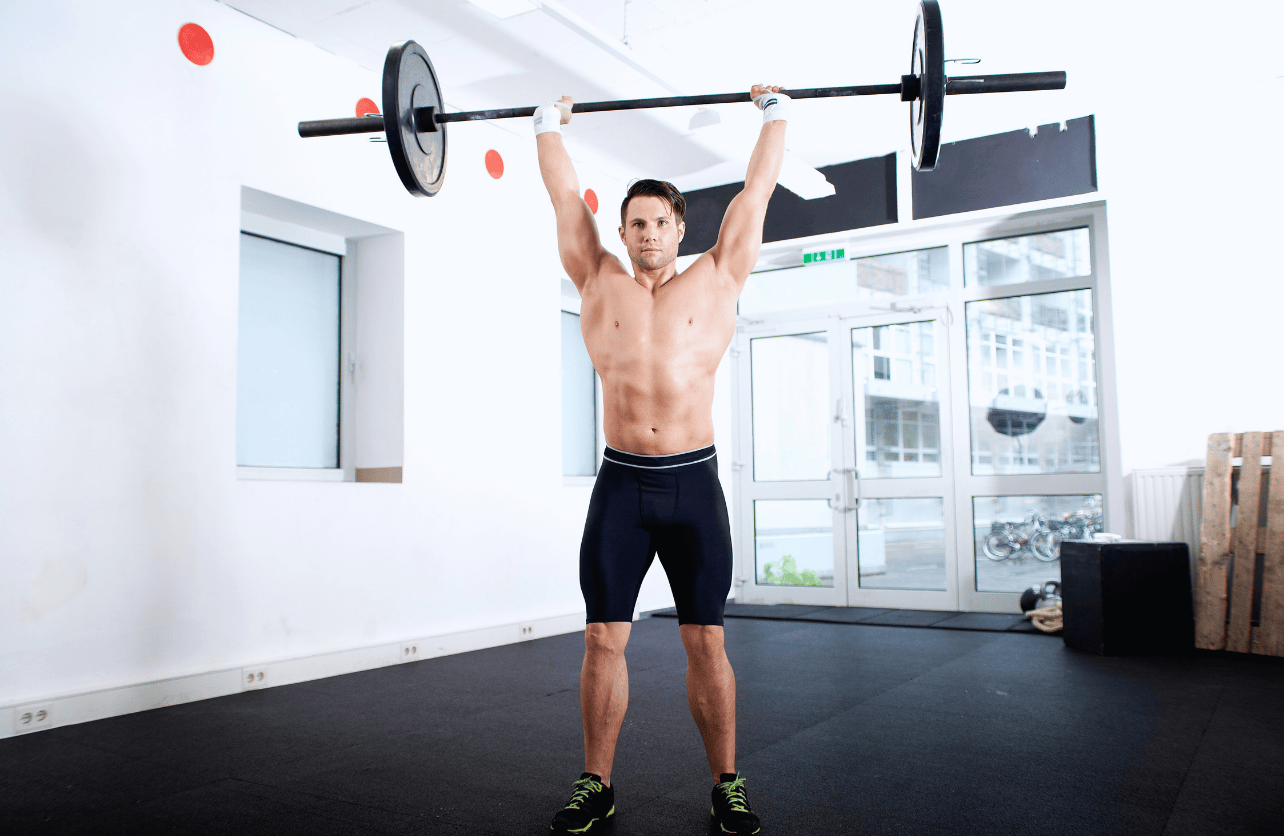Behind-the-Neck Pressing: Risky Exercise or Secret to Bulletproof Shoulders?

Walk into any gym today and mention the behind-the-neck press, and you’ll likely get mixed reactions. Some lifters swear it’s a fantastic shoulder builder, while others avoid it entirely due to fears of injury. But why does this particular lift attract such strong opinions, and is the fear justified, or is it based on outdated ideas?
Let’s dig into the truth about behind-the-neck pressing, exploring both the real benefits and addressing the common misconceptions about this controversial exercise.
Why Has the Behind-the-Neck Press Become So Controversial?
Over the past few decades, behind-the-neck pressing has earned a somewhat sinister reputation, often described as a “shoulder destroyer.” Many personal trainers actively discourage its use, citing the potential risk of impingement or injury. This cautious attitude, though well-meaning, has largely been built on generalized fears rather than direct evidence.
Historically, legendary bodybuilders and strength athletes—figures like Arnold Schwarzenegger, Ed Coan, and Dmitry Klokov—regularly included heavy behind-the-neck presses in their routines without catastrophic shoulder injuries. So, if it’s really so dangerous, how did these legends manage not just to survive, but thrive?
Understanding the Benefits: Why Include Behind-the-Neck Presses?
1. Superior Shoulder Activation
The most significant argument for behind-the-neck pressing revolves around biomechanics. Traditional overhead presses position the bar in front of the body, engaging the front deltoids and upper chest more heavily. While that’s great for overall upper-body strength, it doesn’t fully isolate the shoulder muscles.
When pressing behind the neck, however, the bar path becomes perfectly vertical. There’s no need to maneuver the bar around the face, allowing the lift to remain strictly shoulder-dominant. Your chest can’t contribute significantly here, forcing the shoulders—particularly the side delts—to bear nearly the entire load.
This biomechanical reality makes behind-the-neck presses exceptionally effective for developing those coveted “capped” deltoids that create broad, strong-looking shoulders.
2. Improved Shoulder Mobility and Resilience
Critics frequently argue that behind-the-neck pressing places your shoulders into awkward, compromised positions, making injuries more likely. Ironically, this exact point is also its primary benefit.
Consider this: avoiding difficult positions doesn’t make your shoulders safer—it just leaves them weak and vulnerable when inevitably forced into these positions in real-life situations or sports. Instead, carefully training in these “compromised” positions builds strength, flexibility, and resilience. It teaches your body how to handle stress from multiple angles, effectively “bulletproofing” your joints against injury.
The behind-the-neck press achieves this by placing your shoulders in deep external rotation and extension. Regular, controlled exposure to this position conditions your joints and tissues, significantly enhancing overall shoulder health and performance.
3. Correcting Common Postural Issues
In our modern, seated lifestyles, shoulders are commonly hunched forward due to tight chest muscles and weak upper backs. Behind-the-neck pressing actively combats this by strengthening the rear deltoids, mid-traps, and rhomboids—critical muscles for maintaining upright, confident posture.
By regularly including BTN presses in your training, you’ll naturally counteract the hunched, rounded posture common among desk workers, improving both your appearance and shoulder health.
Addressing the Risks: Intelligent Implementation Is Key
It’s undeniable that behind-the-neck presses can pose risks if approached carelessly. But the truth is that all heavy lifting carries inherent risk. Bench pressing, squatting, and deadlifting—all gym staples—can injure you if performed incorrectly.
The key to safe and effective behind-the-neck pressing is intelligent, progressive implementation. Here are practical tips for safely incorporating this exercise into your routine:
Start Light: Begin with an empty bar or very low weight. Mastering technique and building mobility first is essential.
Use a Gradual Progression: Increase weight slowly—far more slowly than other exercises. This allows your shoulders to adapt safely to the stresses of this unique position.
Prioritize Mobility Work: Incorporate stretches and exercises that open up your chest, improve thoracic spine mobility, and enhance overall shoulder flexibility.
Never Force Through Pain: Mild discomfort as you adapt to a new exercise is expected; sharp or persistent pain is not. If the movement genuinely hurts, back off, reassess your form, or seek help from a professional coach.
How to Integrate the Behind-the-Neck Press into Your Training
Depending on your current level and goals, there are several ways to program the BTN press:
For beginners or those cautious about injuries: Include BTN presses as a secondary exercise after your main lifts. Keep reps moderate to high (8–15 reps) to emphasize technique, muscle endurance, and mobility.
For intermediate lifters looking to enhance bench press or overhead strength: Include BTN presses as your second pressing movement, using moderate weights and a pyramid structure. For example, start lighter with sets of 10–12 reps, then gradually increase weight for lower-rep sets.
For advanced lifters aiming to specialize: Use BTN pressing as your primary overhead movement. Follow structured rep schemes such as 5×5 or reverse pyramid setups, cycling heavier sessions with lighter, high-volume sessions for optimal development.
The Verdict: Should You Include the BTN Press?
Behind-the-neck pressing isn’t the villain it’s made out to be. With proper technique, gradual progression, and responsible programming, it can become one of the most powerful tools in your shoulder-training arsenal.
Rather than avoiding exercises due to misplaced fears, embracing and intelligently managing these movements can lead to extraordinary gains in strength, mobility, and joint health. The behind-the-neck press offers precisely these benefits, rewarding those who patiently and intelligently master it.
So, forget the outdated myths, ditch the fear-mongering, and give your shoulders the robust, resilient strength they deserve by carefully introducing the behind-the-neck press into your routine. Your shoulders—and your long-term performance—will thank you.
Trustworthy Insights for You
With years of combined expertise in online publishing, OvertimeReviews embodies the lessons learned from SEO strategies to paid advertising experiences. We've navigated the highs and lows, and our goal remains clear: to equip readers with comprehensive information they can trust.
